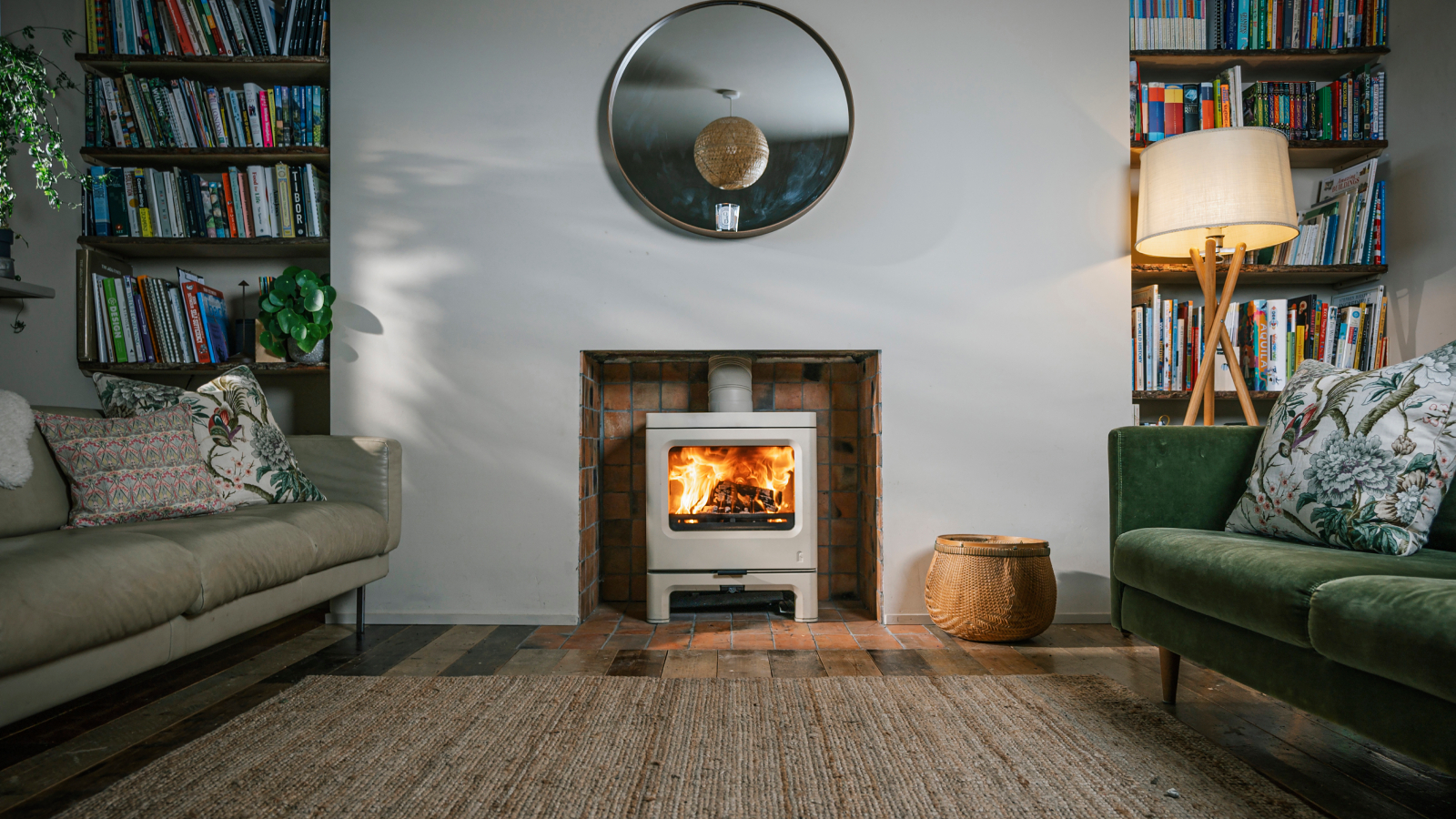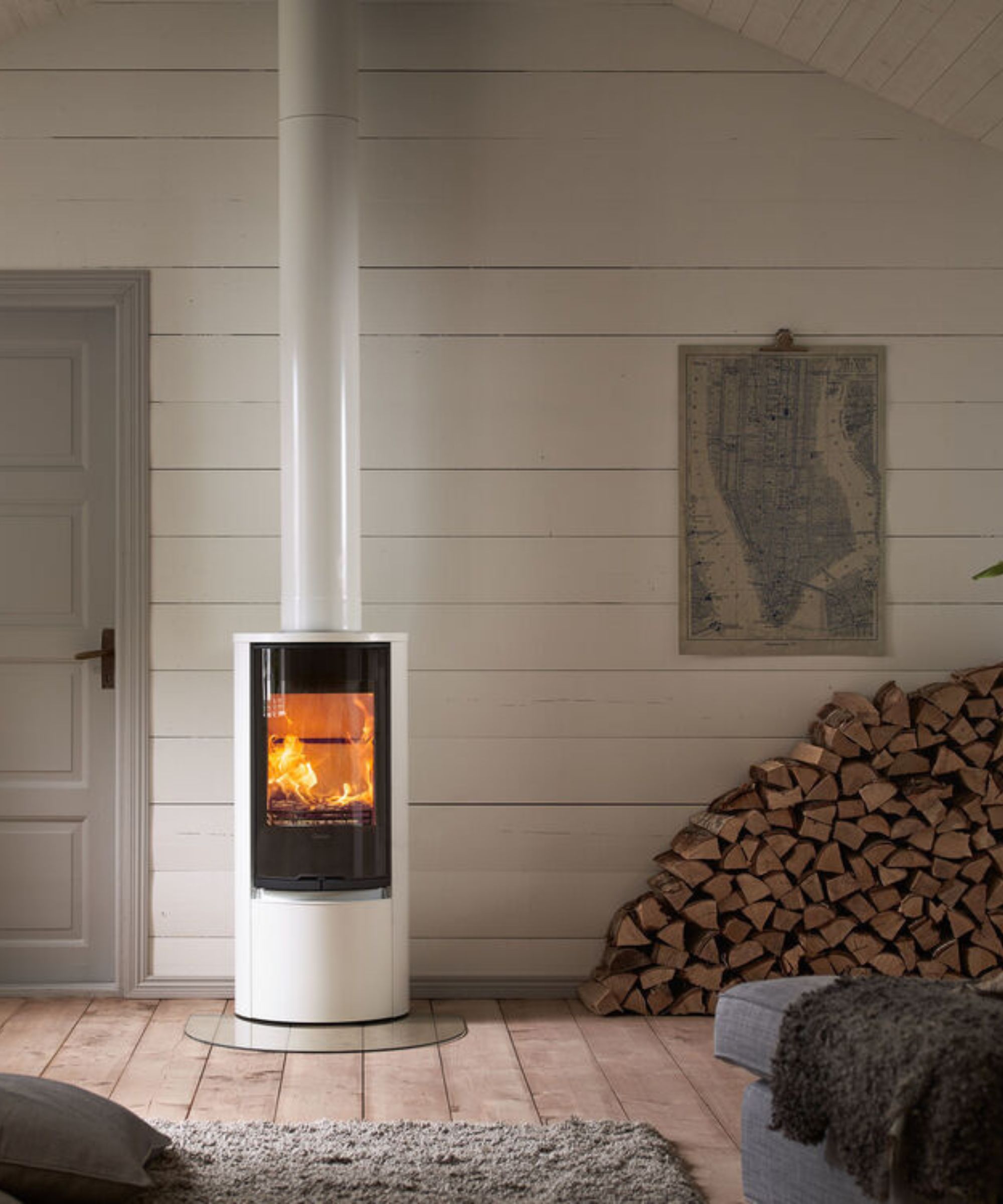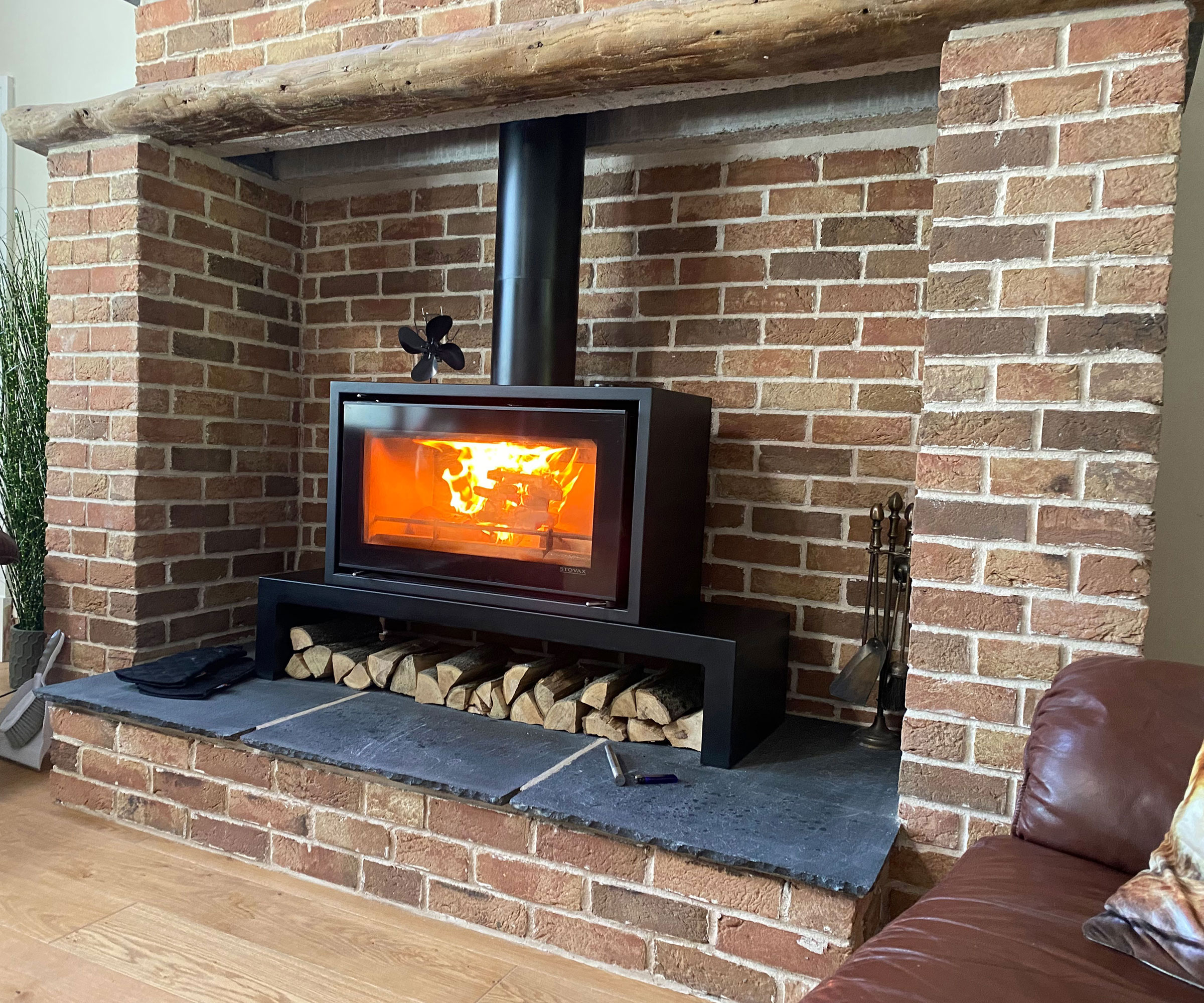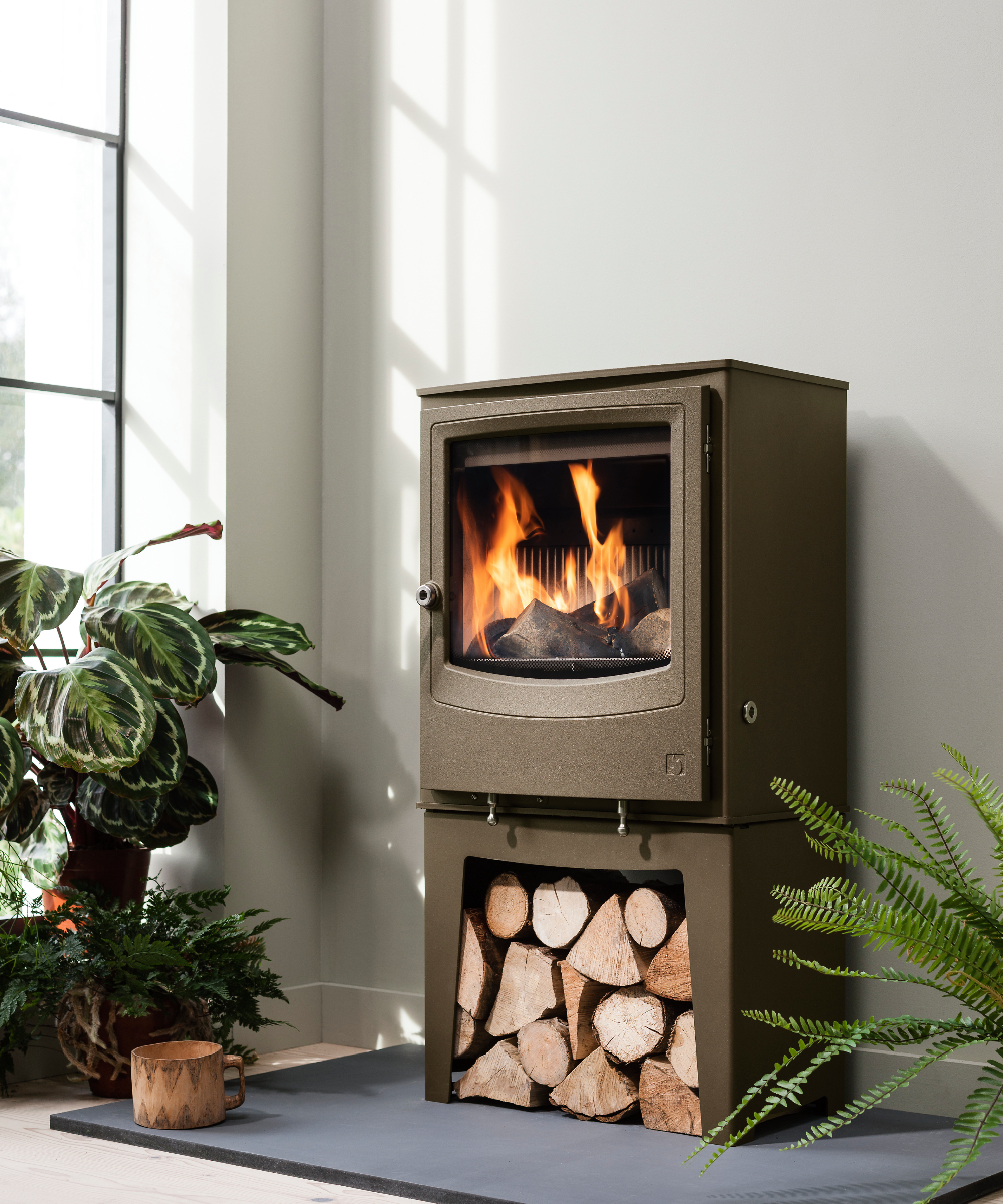Can I buy and install a secondhand log burner?
With strict safety guidelines in place for heating your home, you'd be right to question if you should consider a secondhand log burner. Here's what the experts advise

If the allure of log-burning stoves appeals, but budget is limited, you may be considering purchasing a secondhand log burner. But can you buy one and should you get it installed, or will you be breaking the current regulations if you do?
With strict guidelines in place surrounding the burning of wood, as well as the types and models of stoves that are permitted, it's important to know what is and isn't allowed when it comes to secondhand log burners.
As while it may be tempting to snap up that second hand log burner you've seen for sale locally, you could find yourself in a hotter mess than you bargained for if you don't get it right.
Is it illegal to buy a secondhand log burner?
In short, the answer is no, it isn't illegal to buy a secondhand log burner, although it's a little more in-depth than that say the experts.
We spoke to Calvin May, head of technical service at HETAS, the independent not-for-profit organisation promoting cleaner and safer choices for the use of biomass and other solid fuels, appliances and associated technologies, to find out the implications of buying and installing a secondhand log burner.

Calvin has over 24 years experience with HETAS and is responsible for leading the technical departments in raising best practice standards for the installation and commissioning of solid fuel equipment and services, as well as providing informative updates which may impact the responsibilities of HETAS registrants and recognised stakeholders.
Ecodesign and secondhand log burners
Before we delve into the details of installing a second hand log burner, it's important to understand the guidance behind Ecodesign legislation. Since 2022, it's become illegal for manufacturers to build and supply wood burning stoves that don't comply with Ecodesign guidelines.
Introduced to improve the energy efficiency of wood burning stoves and reduce their environmental impact, it's still a relatively new rule, which means there are still stoves in existence that aren't manufactured under these guidelines.
So, while it's never advisable to purchase a log burner that is more than 10 years old, you can still buy models that were manufactured prior to 2022 – whether that's first or second-hand.
Calvin May explains how the rule affects log burners made before this date and then sold on. "Stoves that have already been installed before 1 January 2022 (non-Ecodesign models) and are then sold on the secondhand market are not required, by Ecodesign regulations, to meet the emission and efficiency criteria before their sale and therefore can be installed," confirms Calvin.
Although it would be wise to ensure any secondhand log burner you do purchase is sold with an invoice or proof of purchase, as you could find you need to confirm its origin and timestamp.
"If the stove can be evidenced as being manufactured and placed on the market before 1 January 2022, then it legally can be sold in conformity with the Ecodesign regulations and installed in the UK.
"This includes any stove that can be evidenced as being in the supply chain (such as warehouse storage) before this date, not just second-hand stoves," says Calvin.

Installing a secondhand log burner
As installing a log burner is a job best saved for the professionals, it would be fair to assume you may find an installer reluctant to install a secondhand one. But is this the case, or are they permitted to do so?
"Can an installer fit a secondhand non Ecodesign log burner? The simple answer is yes," confirms Calvin. "Ecodesign regulations are required at point of manufacture, so a registered installer is not prohibited from installing a secondhand, non-Ecodesign stove, even after 1 January 2022.
"However, the installer will still be required to ensure that the appliance meets the minimum gross efficiency limits specified in UK Building Regulations," warns Calvin.
And it's because of this you may find an installer less reluctant to work with a secondhand product.
The impact of compliance on secondhand log burner installation
"When using a HETAS registered installer, you do not need to get building control involved as, under the rules of competent person schemes, registered installers are able to self-certificate and sign off an installation," explains Calvin. "This includes second-hand appliance installations – your registered installer will notify the work by issuing a Building Regulation Compliance Certificate, or a Certificate of Compliance.
"But, whether an installer chooses to install a secondhand stove is entirely up to them as responsibility for compliance against Building Regulations and the appropriate British Standards lies solely with them," says Calvin.
"Subsequently, some installers may choose not to fit an appliance that does not meet Ecodesign requirements as the stove will not be future-proof and replacement parts may be difficult to source."
Installing a secondhand log burner yourself is even riskier
Because of the need for compliance, it's even more important that you don't consider installing a secondhand log burner yourself, says Calvin May.
"As it is a legal requirement to notify any solid fuel installation in England and Wales to the relevant Local Authority Building Control (LABC), if you chose to install your secondhand stove yourself, you would need to obtain a Building Regulation Compliance Certificate from your LABC.
"Registered installers are able to self-certify their work but are not able to notify work they did not carry out themselves," he explains. "As such, it is strongly recommended that the installation is carried out by a registered installer to ensure the installation is safe and complies with relevant Building Regulations.
"If you choose to ignore advice and install the secondhand stove yourself, you will need to apply to building control in advance of the work taking place; only those registered on a competent person scheme are able to self-certify," says Calvin.
And, applying after the work has been done comes at a cost he warns. "If you install a stove yourself without applying to building control you will require regularisation, which often incurs a higher cost than applying prior to the work taking place."

Pre-installation advice
In the same way as you would if you were fitting a new log burner in your home, if you do decide to buy and install a second hand log burner, there is best practise to follow.
"A pre-assessment survey should be undertaken to fully understand whether the appliance is suitable and will perform effectively in the chosen location," says Calvin. "A room sizing calculation to work out what size log burner do I need is one of the methods of understanding an appliance’s suitability," he explains.
"It is also important to check if the installation is taking place within a smoke control area (SCA)," he adds. "The burning of unauthorised fuels within a SCA is only allowed when the fuel is burnt in a ‘smoke exempt’ appliance, such as Cleaner Choice appliances which have been verified as meeting this requirement and can be used to burn wood fuel in a SCA."
The risk of not checking whether you live in an SCA area? "Failure to comply with SCA regulations may result in a fine," warns Calvin.
"It is also vital that the user is informed on the correct fuels to use (such as Ready to Burn fuels), how to operate the appliance in accordance with the manufacturer’s instructions, and the importance of regular installation servicing and maintenance," advises Calvin.

Secondhand log burner vs new
While the rules do allow purchasing and installation of secondhand log burners, is it worth it or do the risks and potential poor quality outweigh any potential cost benefits?
"Whilst it is possible to install non-Ecodesign stoves, modern appliances should be favoured for installation due to their high efficiency and minimised emissions," says Calvin May. "For example, all HETAS Cleaner Choice stoves have been independently verified as being Ecodesign-compliant and achieving a minimum of 50% improvement on particulate emissions against the current appliance limits set within smoke control areas.
"Using the most appropriate and efficient stoves that your budget allows will ensure you are emitting minimal emissions as you keep your home warm."
It's something the Stove Industry Association (SIA) agrees with too.
"The SIA recommends choosing a new stove," confirms Erica Malkin, communications manager for the SIA.
"The very latest stove models are precision engineered to operate at optimum efficiency and with minimal emissions when used correctly. Under the Ecodesign regulation, buying new means that you do not have to worry about its performance or suitability."
But, with the manufacturing rules around log burners changed, could the rules regarding installation change too?
"The current conditions are for point of manufacture, so unless the conditions of Building Regulations or Ecodesign are amended to encompass any stove sold on the market, secondhand wood burners can still be installed," says Calvin May.
Although that may not always be the case he suggests.
"Government and devolved administrations are continuing to develop their plans on air quality (both indoor and outdoor) and the impact of older or secondhand appliances may be a focus in the future."
Re-thinking your plans to install a second hand log burner? Take a look at these log burner ideas instead and be sure to find out how the best stove fan can help improve your log burner's performance – even when it's a new model.
Get the Homebuilding & Renovating Newsletter
Bring your dream home to life with expert advice, how to guides and design inspiration. Sign up for our newsletter and get two free tickets to a Homebuilding & Renovating Show near you.

Sarah is Homebuilding & Renovating’s Assistant Editor and joined the team in 2024. An established homes and interiors writer, Sarah has renovated and extended a number of properties, including a listing building and renovation project that featured on Grand Designs. Although she said she would never buy a listed property again, she has recently purchased a Grade II listed apartment. As it had already been professionally renovated, she has instead set her sights on tackling some changes to improve the building’s energy efficiency, as well as adding some personal touches to the interior.
